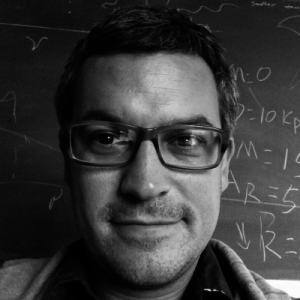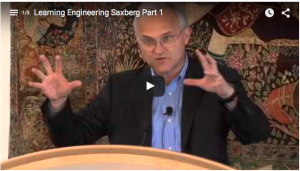CIRCL News
On the CIRCL team, “B” stands for Broader Impact, Broadening Participation and Brokering connections. At the Next Generation STEM Learning for All forum on November 9 (see collected tweets), CIRCL joined with STELAR and CADRE to share the impact of NSF-funded research with policy-makers, philanthropists, educational leaders, and more, leading into President Obama’s summit the next day. We are actively working to broaden participation in our research by inviting buddies to Cyberlearning 2016, as well as through workshops and webinars to welcome additional researchers to our field. We need your help: think about colleagues who could increase our diversity and let them know about key resources for new proposers on the CIRCL site, including recordings of solicitation webinars, common reasons proposals aren’t funded, and questions that guide reviewers decisions. CIRCL also directly works to broker connections — among researchers and to our circle of influence. If you need help connecting, check out the DIA2 webinar recording or drop us a line. Also the Cyberlearning 2016 program is now available on the website, and the program committee is busy working with attendees to prepare sessions. Webcast details will be included in our January newsletter. We look forward to seeing you there – in person or online!
Featured Perspective: Meet Aaron Dubrow
Aaron Dubrow is a Public Affairs Specialist with NSF’s Office of Legislative and Public Affairs (OLPA). Although Aaron covers a wide range of topics for NSF, his “beat” includes cyberlearning research projects. Aaron wants researchers to know that they have an important role to play in outreach efforts.
What does OLPA do?
OLPA communicates information about the activities, programs, research results and policies of the National Science Foundation. The Office employs a variety of methods to communicate the value of NSF’s research to everyone from the general public, to policymakers, to other researchers. The Office also seeks to inspire scientists to communicate the results of their own research.
What are examples of the kinds of communication approaches you employ?
We publish press releases, feature stories, news briefs and produce video series, radio documentaries and special reports. Much of our content is published on the NSF website and on Science 360 – a website and mobile app that provides easy access to engaging science and engineering news from around the nation. We also communicate through social media channels, featuring news about NSF-funded researchers and their discoveries. Content is either produced by NSF or gathered from scientists, colleges and universities and NSF Science and Engineering Centers. Read more of Aaron’s perspective.
Opportunities: BIGDATA, Connected Communities, AmeriCorps, A4L Paper Series, and More
The NSF BIGDATA program seeks novel approaches in computer science, statistics, computational science, and mathematics, along with innovative applications, that lead towards the further development of the interdisciplinary field of data science. The submission deadline is February 9, 2016.
NSF invites supplements to existing grants under its Dear Colleague Letter: Supporting Research Advances in Smart and Connected Communities, to stimulate basic research and new technologies to enable more livable, workable, sustainable, and connected communities. The submission deadline is March 1, 2016, but earlier submissions are encouraged.
Join program officers Arlene deStrulle and Jan Cuny for a webinar on the STEM+C Program Solicitation. Webinars will be held November 23 and December 14, 15, and 16. Register for this webinar.
The 2016 AmeriCorps competition is focused on using national service to implement and scale up evidence-based interventions, and has a priority on STEM Education. A notification of intent to apply is due December 9, 2015 and applications are due January 20, 2016.
Graduate students and post-doctoral researchers studying learning behaviors and strategies in online environments are invited to participate in a paper series “Measurement in Digital Environments” organized by Analytics for Learning (A4L). Invited authors will be provided with a stipend of $1000 and will produce a 5-10 page paper that describe how student-level data can be leveraged to better understand methodological, theoretical or educational practice issues. Deadline for submission: December 15th, 2015.
MSPnet invites you to register for the Bootstrap: Programming Videogames with Algebra webinar on December 2, 2015.
Medha Dalal, a graduate student at the Mary Lou Fulton Teachers College at Arizona State University, invites you to complete a two question anonymous survey about learning theories that are important to different communities.
Applications to the PhD in Education program at U.C. Santa Cruz are being accepted for Fall 2016. The UCSC program is based on an apprenticeship model, and features small student cohorts and opportunities to collaborate closely with faculty mentors in interdisciplinary ways to address issues in education. Applications are due December 1, 2015.
Project Spotlight: Enabling Collaborative Science Learning Experiences on Mobile Devices
An interview with Cathie Norris and Elliot Soloway about their NSF-funded project to enable collaborative science learning experiences on mobile devices.
What is the big idea of your project work?
The big idea is this transition from Web 2.0 to what we’ve been calling Social 3.0. Web 2.0 is support for asynchronous collaboration–whether it’s twitter, or SMS, or facebook–where there’s a post and a response to the post. What Social 3.0 is saying is that we need to support synchronous collaboration where people are working together in real time. For the classroom, synchronous collaboration really means supporting social learning – learning with and from each other. Coming up with a software environment that support kids in doing that is what we’ve been all about. Read more about Enabling Collaborative Science Learning Experiences on Mobile Devices.
Bror Saxberg Forum: A Call for Learning Engineers
If you want to build a suspension bridge, you wouldn’t hire a physicist to design it — you’d want an engineer. On October 5th, CIRCL hosted an online forum with Dr. Bror Saxberg, CLO of Kaplan, Inc., who asked: Where are the Learning Engineers? Saxberg called for a new class of professionals who know the underlying science of learning, but who also know about things like project management, the strengths and weaknesses of the newest products, how schools and districts procure and deploy technology, state and federal regulations, systems and data architecture. and all the other practical matters that determine the success of deployment at scale. Attendee Cassandra Kelley, CalStateTEACH Faculty, summed it up this way: “Learning Engineers start with science — especially including the lens of learning sciences — to design and test in educational settings, and they extend the process of collecting data to evaluate what’s working, how it’s working.” See the forum archive for a video the talk, slides, and tweets from the event. CIRCL is planning additional forums during the coming months; stay tuned.
New Cyberlearning Awards
A sample of new projects with a cyberlearning theme funded by programs across NSF.
- A Middle School After-School Pilot Program Integrating Computer Programming and Music Education. Funded by DRL AISL. PI: Jesse Heines.
- Robotics and E-Textiles Backpacks for Family Learning. Funded by DRL AISL. PI: Carrie Tzou.
- An Intelligent Tutoring System for Organic Chemistry. Funded by DUE S-STEM:SCHLR SCI TECH ENG&MATH, IUSE. PI: Ian Gould.
- BIGDATA: F: BCC: Data driven optimization of classroom learning activities. Funded by DGE PROGRAM EVALUATION. PI: Zoran Popovic.
- Building Interdisciplinary Capacity for Understanding and Supporting Computer Supported Collaborative Learning. Funded by DGE PROGRAM EVALUATION. PI: Cindy Hmelo-Silver.
- MATH: EAGER: Online Collaborative Problem Solving in Remedial College Mathematics. Funded by DUE IUSE. PI: Mark Warschauer.
- IUSE: A Pedagogical Framework for Undergraduate Project-Based Engineering Design Courses. Funded by DUE IUSE, Cyberlearn & Future Learn Tech. PI: Conor Walsh.
- Collaborative Proposal: Integrated Development of Scalable Mobile Multidisciplinary Modules (SM3) for STEM Education. Funded by DUE S-STEM:SCHLR SCI TECH ENG&MATH, IUSE. PIs: Mahesh Banavar, Andreas Spanias.
- Collaborative Research: “I AM an engineer!” Assessing Engineering Identity, Its Development, and Its Contribution to Retention among Engineering College Students. Funded by DUE S-STEM:SCHLR SCI TECH ENG&MATH, IUSE. PIs: Kristi Shryock, Debra Major.
- Collaborative Research: An impact study to examine the efficacy of a mathematics professional development program for elementary teachers. Funded by DRL ITEST, Core R&D Programs, Cyberlearn & Future Learn Tech. PI: Paola Sztajn.
- Collaborative Research: Building Enhanced Scientific Thinking through Modeling Ecosystems. Funded by DRL ITEST. PIs: Robert Coulter, Eric Klopfer.
- Collaborative Research: Developing and Assessing Effective Cyberlearning within the STEMWiki Hyperlibrary. Funded by S-STEM:SCHLR SCI TECH ENG&MATH, IUSE. PIs: Delmar Larsen, Joshua Halpern, Justin Shorb, Ronald Rusay, Robert Belford, Henry Jakubowski.
- Collaborative Research: Engaged Student Learning – Design and Development Level II: Using a Cyberlearning Environment to Improve Student Learning and Engagement in Software Courses. Funded by DUE S-STEM:SCHLR SCI TECH ENG&MATH, IUSE. PIs: Gursimran Walia, Peter Clarke, Ingrid Buckley, Andrew Allen, Debra Duke, Yujian Fu, Edward Jones, James Kiper.
- Collaborative Research: Strategies for Learning: Augmented Reality and Collaborative Problem-Solving for Building Sciences. Funded by DUE ENGINEERING RESEARCH CENTERS, S-STEM:SCHLR SCI TECH ENG&MATH, IUSE. PIs: Shahin Vassigh, Amir Behzadan.
- Collaborative Research: The Downside of Perseverance–Investigating and Moving Students Beyond Unproductive Persistence. Funded by DGE CORE R&D Programs. PIs: Ryan Baker, Neil Heffernan, Nicole Shechtman.
Resource & Tech Corner
STEM Teaching Tools has dozens of free, print-ready PDF tools developed as part of the NSF-funded Research+Practice Collaboratory project to help you teach STEM topics. The tools, co-authored by teachers and researchers, focus on implementing the NGSS. Each tool focuses on a specific STEM topic, summarizes relevant ideas from research and practice, highlights actions that can be taken by educators (with links to relevant tools), and includes reflection questions. Teachers and district staff use them to launch professional development discussions, highlight aspects of the NGSS vision to stakeholders (principals, district staff, scientists, parents), or to individually reflect on their practice. The project aims to post one new tool per week during the academic year.
Videos of talks from last month’s Digital Media and Developing Minds Colloquium, an Arthur M. Sackler Colloquium of the National Academy of Sciences, feature neuroscientists, pediatricians, developmental psychologists, child development experts, social scientists, educational researchers, experts in informatics, and others reporting on research on the impact of digital media on developing minds. The goal of the colloquium was to report on and discuss potential effects of new media use, and establish dialogue to shape future research efforts.
The Research-Practice Partnerships Forum is a new webinar series moderated by Bill Penuel that offers information, strategies, and discussion about partnership experiences. Access archives of past sessions and learn more about the series on the forum page. Topics include: Getting a Partnership Started (10/15/15), Defining the Focus of Partnership Work (11/19/15), Negotiating Roles in Partnerships (12/17/15), Addressing Challenges in Partnerships (1/21/16), Measuring Impacts of Partnerships (2/18/16), and Sustaining Partnerships (3/17/16).
Job Opportunities
The MIT Teaching Systems Lab is looking for one research scientist immediately, and another to start soon. Candidates who are not available now are still encouraged to send in materials to introduce themselves. The Lab investigates the complex, technology-rich K-12 classrooms of the future and the systems that we need to prepare teachers to thrive in those classrooms.
Vanderbilt’s Department of Teaching and Learning has the following open faculty positions: tenure track Learning Sciences Position, tenure track Elementary Mathematics Education, Professor of the Practice of Elementary Education/Mathematics, and tenure track Language, Literacy, and Culture Position: English Language Learners and Educational Linguistics.
Northwestern University (NU) School of Education and Social Policy seeks applicants for a postdoctoral fellow in the learning sciences. The candidate will be part of a team of researchers, faculty, and teachers involved in a newly funded initiative by the Spencer Foundation.
The University of Colorado at Boulder has two openings for an Assistant Professor of Creative Technologies and Design, and several other positions in the School of Education.
Share Your News
Have some news (project highlights, publications, job opportunities, etc.) that you want to share? Contact CIRCL.
CIRCL is supported by NSF grants IIS-1233722 and IIS-1441631. Any opinions, findings, and conclusions or recommendations expressed in this material are those of the author(s) and do not necessarily reflect the views of the National Science Foundation.






